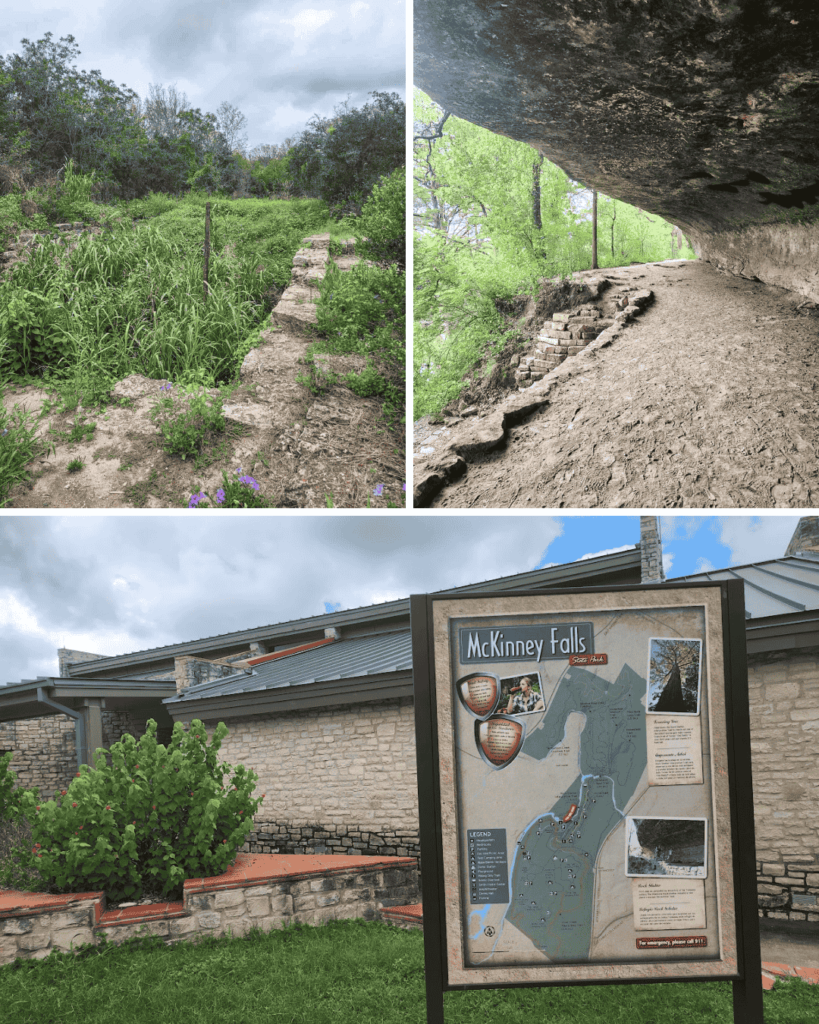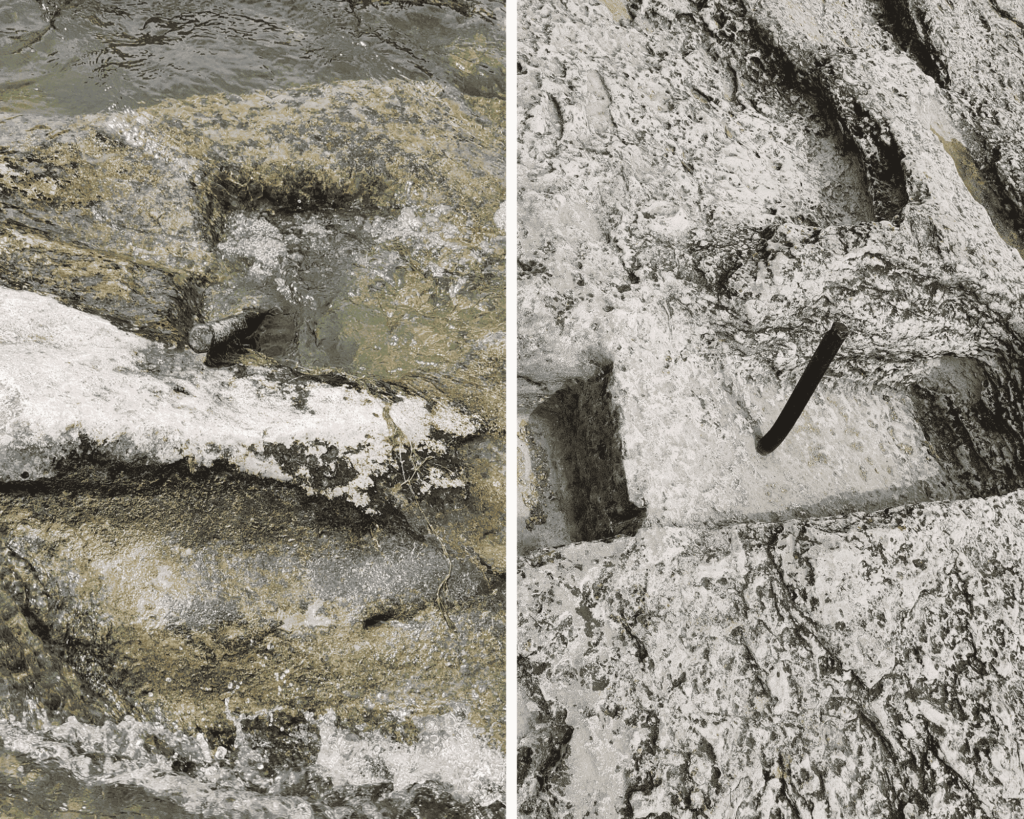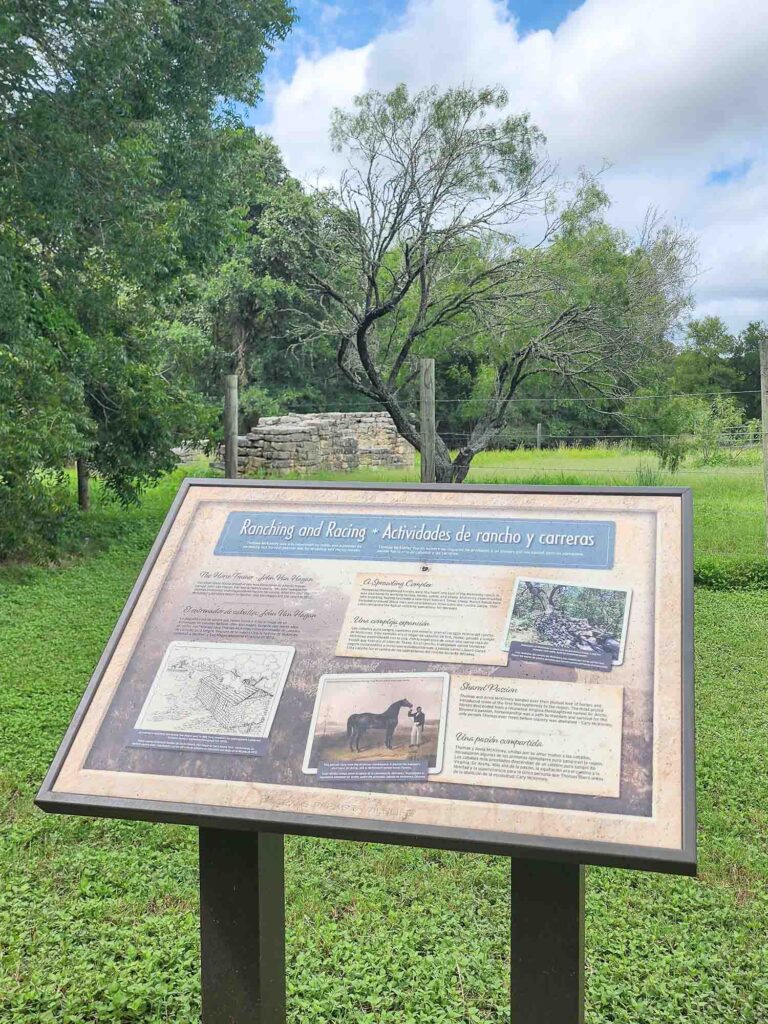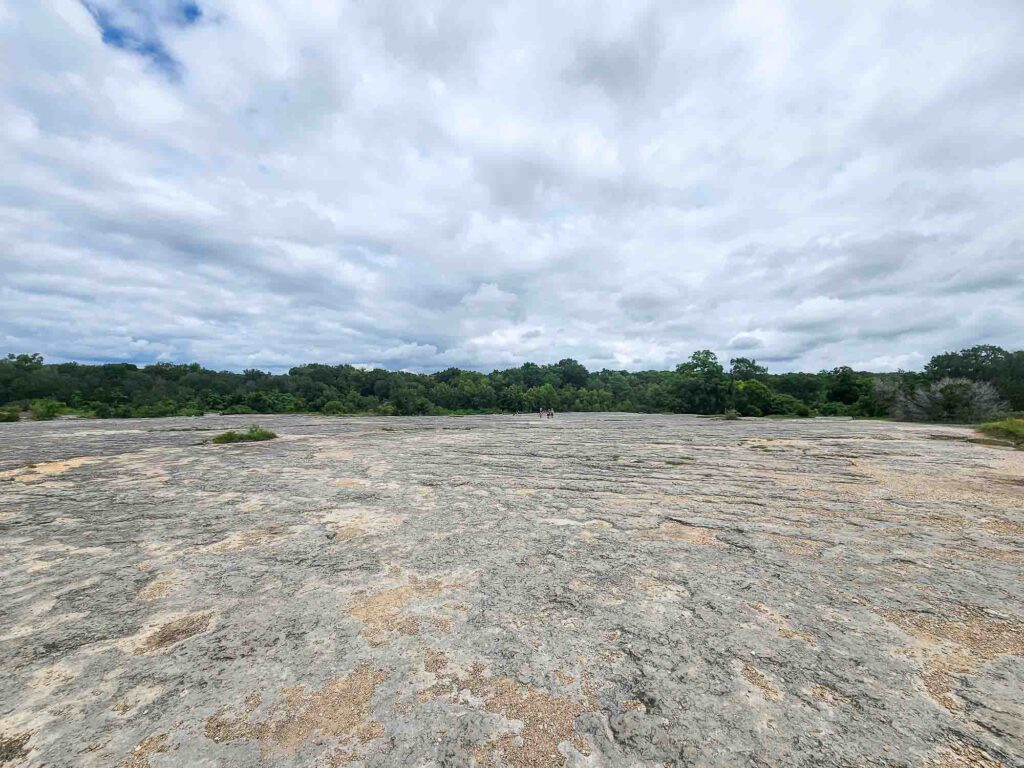Did you know that Austin’s McKinney Falls State Park is home to plenty of historic structures? That’s right! While the park may be most famous for its two waterfalls, it also has a rich history as evidenced by these structures. Four of them belong to the times of Thomas McKinney and were built by enslaved people while one predates us all by over thousands of years. Here’s a look at all of the park historic structures plus a living natural wonder that’s 500 years old!

Old McKinney Homestead
The area you see today is the state park but over 180 years ago it was the ranch and homestead of Thomas McKinney. McKinney was one of Stephen F Austin’s 300 original colonists and an influential figure in Texas history. He bought the land in 1831 and built a two-story limestone house there in 1850 – the Old McKinney Homestead!
This structure was partially destroyed by a fire in 1940 but its foundation still stands strong today. You can see it on the Homestead Trail that begins after crossing the creek upstream of Lower Falls. The trail is 3 miles long and takes about 1 to 1.5 hours. It is also one of the most popular hiking trails in the park.

Prehistoric Rock Shelter
While Thomas McKinney bought the land in the 19th century, it has been inhabited by Native American tribes for over a thousand years. The prehistoric rock shelter was formed when Onion Creek flowed at a much higher level and cut the underlying soft volcanic tuff deposited by the Pilot Knob Volcano.
This rock shelter was subsequently used by the indigenous tribes for shelter. Excavations have revealed signs of habitation from 500 BC well into the 1750s. The shelter is also on the National Register of Historic Places and of archeological significance. The Rock Shelter Trail beginning from the McKinney Falls Visitor Center will take you to this historic site.

Gristmill
Thomas McKinney was the first to build a gristmill powered by the waters of Onion Creek and Williamson Creek. He chose the site of his windmill just beyond the confluence of the creeks, a short distance away from Lower McKinney Falls. The flour mill was built by slaves in 1852 and its opening was greatly welcomed by surrounding communities.
The original historic structures and machinery of the Gristmill was severely damaged by the flood of 1869 when the creek water rose by several feet. However, you can still see the foundations of the mill on the Homestead Trail that starts just beyond the Lower Falls. You will need to cross the creek to reach the mill remains.

McKinney’s Dam
To power his Gristmill, Thomas McKinney had a dam built across the creek just upstream of Lower Falls. This diverted all the water from the creek to the flour mill and powered the turbine that moved the millstones. While the dam no longer exists, you can still see the iron rods that supported the dam drilled in the creek bed itself. You can spot them just upstream of the Lower Falls and imagine how the dam must have looked back in the day.

Horse Trainer’s Cabin
Just inside the park entrance, before the Lower Falls parking lot you will find the Horse Trainer’s Cabin. Thomas McKinney loved racehorses and even bred them. His horse trainer John Van Hagan lived in this single storey stone house built by slaves. The cabin is still very well-preserved and easily accessible from the Onion Creek Hike and bike trail.

El Camino Real
The El Camino Real de Los Tejas National Historic Trail went right through McKinney Falls State Park. This trail connected the Spanish frontier missions in Texas and was used by settlers to expand through the state and spread Christianity. You can see an excellent exhibit tracing the route at the park’s Smith Visitor Center.
The park was an important stop on the trail and two creek crossings are located within the park. One is upstream of Upper McKinney Falls while the other is just behind Lower McKinney Falls – right at the confluence of two creeks. The giant limestone slab you see before you reach the Lower Falls even has indentations from wagon ruts and hoofs.

Old Baldy
Old Baldy is a majestic 102+ feet long bald cypress tree within the state park. It measures 15 to 16 feet wide and is an impressive specimen. It is one of the oldest trees in Texas. You can hike the Rock Shelter Trail to meet Old Baldy. Relax for a bit and rest in its shade while you admire everything this tree has seen – from those that followed the El Camino Real to McKinney building his homestead and racing his horses in the ranch to the recent floods of 2013 and 2015. Looking up at its branches meet the sky, you will understand why this tree is named Austin’s tree of the year.

McKinney Falls State Park has a storied history. From being submerged under a sea in the Crustacean period to being inhabited by the Tonkawa people in 18th century and from being Thomas McKinney’s homestead to being donated by the Smith Family to Texas Parks and Wildlife Department, the park tells its story through these well-preserved historic structures. It is a must for both history lovers and nature lovers. When are you planning to visit this park in Austin?
Also Read: 9 Must do Hikes in McKinney Falls State Park
